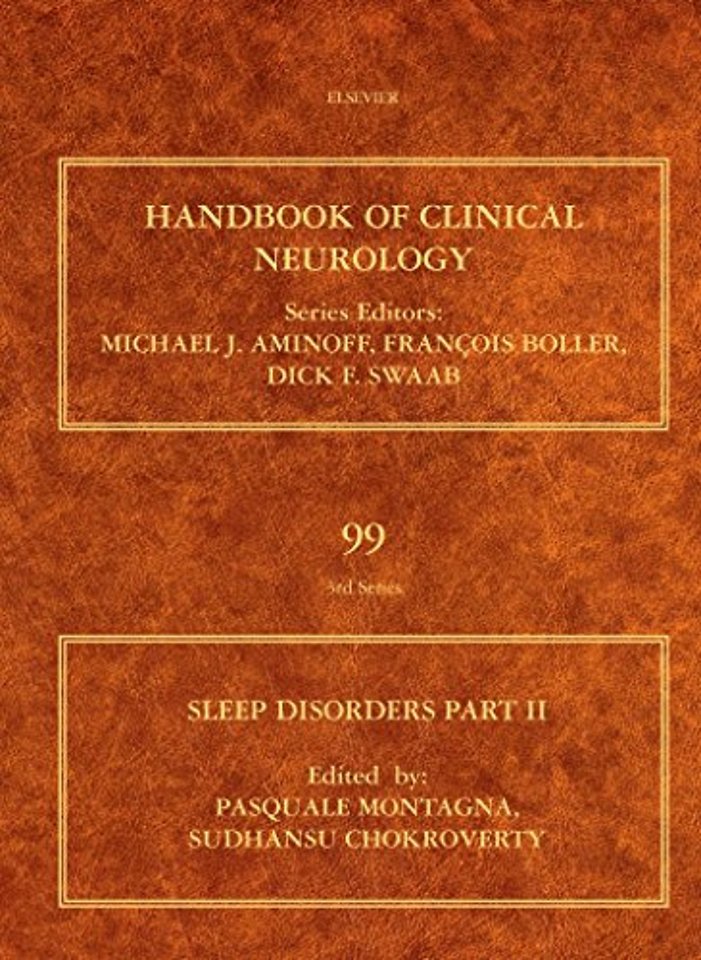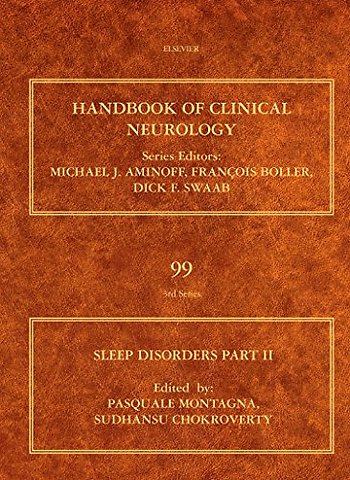<p>Section 1 History of sleep medicine<br>1. History of sleep medicine</p> <p>Section 2 Basic science and methods<br>2. Normal sleep-recording and scoring techniques<br>3. Assessment of daytime sleepiness<br>4. Actigraphic monitoring of sleep and circadian rhythms<br>5. Video recordings and video polysomnography <br>6. Functional neuroimaging in sleep, sleep deprivation, and sleep disorders</p> <p>Section 3 Basic mechanisms of sleep<br>7. The phylogeny of sleep<br>8. Ontogeny of EEG sleep from neonatal through infancy periods<br>9. Neurobiology of waking and sleeping<br>10. Neurobiology of REM sleep<br>11. Neurochemistry of sleep: an overview of animal experimental work<br>12. Molecular neurobiology of sleep<br>13. Manifestations and functional implications of sleep homeostasis<br>14. Thermoregulation in wakefulness and sleep in humans<br>15. Cytokines in immune function and sleep regulation <br>16. Endocrine and metabolic changes during sleep<br>17. Sleep, memory, and molecular neurobiology</p> <p>Section 4 Clinical aspects of sleep disorders<br>18. Epidemiology of sleep disorders <br>19. Cardiovascular and cerebrovascular physiology in sleep<br>20. Cardiovascular diseases and sleep apnea<br>21. Alterations in gastrointestinal functioning during sleep<br>22. Sleep and genitourinary systems: physiology and disorders<br>23. Sleep enuresis <br>24. Respiratory physiology in sleep and wakefulness <br>25. Obstructive sleep apnea: diagnosis, risk factors, and pathophysiology<br>26. Upper-airway resistance syndrome<br>27. Central sleep apnea<br>28. Positive-pressure treatment of obstructive sleep apnea syndrome<br>29. Medical and surgical treatment of obstructive sleep apnea syndrome, including dental appliances<br>30. Noninvasive positive ventilation in the treatment of sleep-related breathing disorders<br>31. Sleep and pulmonary diseases<br>32. Sleep-associated respiratory disorders and their psychobehavioral consequences in children<br>33. Sudden death in infants during sleep<br>34. Neurobiology and the neurological basis of dreaming<br>35. Abnormal dreams and nightmare disorders<br>36. Sleep and psychiatric diseases<br>37. Sleep-related eating disorder<br>38. Alcohol, toxins, and medications as a cause of sleep dysfunction<br>39. Sleep, pain, fibromyalgia, and chronic fatigue syndrome<br>40. Women and sleep<br>41. Normal and abnormal sleep in the elderly</p> <p>Section 5 Classification of sleep disorders<br>42. Classification of sleep disorders</p> <p>Section 6 Genetics of sleep disorders<br>43. Genetics of sleep disorders</p> <p>Section 7 Insomnia<br>44. Neurological perspectives in insomnia and hyperarousal syndromes<br>45. Insomnia: nature, diagnosis, and treatment<br>46. Pharmacotherapy for insomnia </p> <p>Section 8 Hypersomnia<br>47. Hypothalamus, hypocretins/orexin, and vigilance control<br>48. Narcolepsy and cataplexy <br>49. Recurrent hypersomnias<br>50. Excessive daytime sleepiness</p> <p>Section 9 Abnormal movements in sleep<br>51. Motor control in sleep<br>52. NREM parasomnias<br>53. REM sleep parasomnias<br>54. Isolated motor phenomena and symptoms of sleep<br>55. Sleep bruxism<br>56. Restless-legs syndrome and periodic leg movements in sleep</p> <p>Section 10 Circadian rhythm sleep disorders<br>57. Molecular neurobiology of circadian rhythms<br>58. Circadian rhythm sleep disorders</p> <p>Section 11 Sleep and neurological disorders<br>59. Fatal familial insomnia and the role of the thalamus in sleep regulation <br>60. Sleep disorders in Parkinson’s disease<br>61. Sleep disorders in neurodegenerative diseases other than Parkinson’s disease <br>62. Sleep and stroke <br>63. Sleep and headache<br>64. Sleep and breathing in neuromuscular disorders<br>65. Sleep-related epilepsy <br>66. Sleep disorders in multiple sclerosis</p> <p>Section 12 Sleep and violence<br>67. Violent parasomnias: forensic implications</p>

